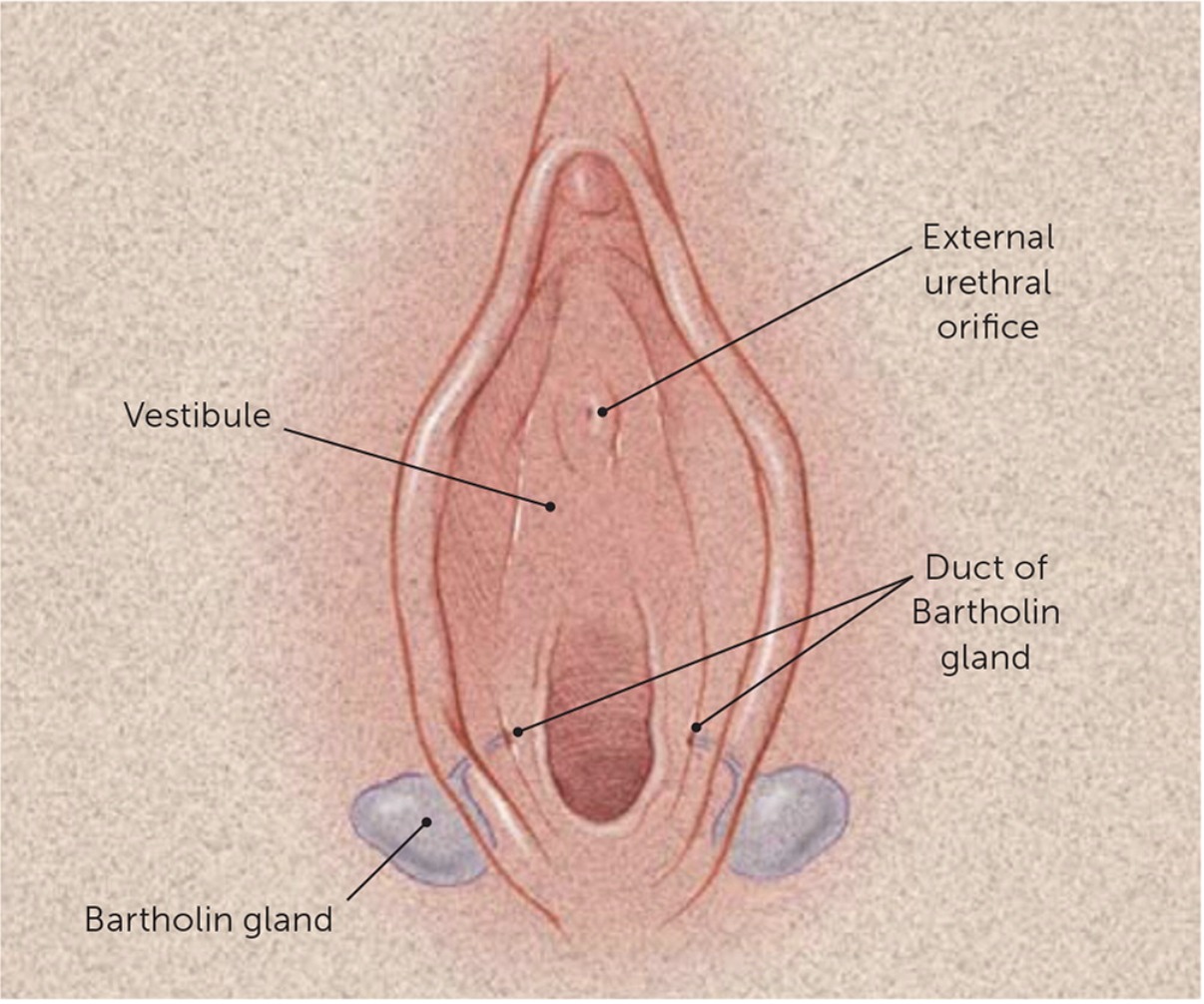The Bartholin glands are approximately 0.5 cm in size, located on the left and right sides of the vaginal opening. Their mucous-like secretions are secreted in preparation for sexual intercourse and conveyed to the vaginal opening through a duct, thus lubricating the vagina during sexual activity. Therefore, the Bartholin glands are most active during the ages when sexual activity and arousal are most common.
Bartholin cysts are primarily caused by obstructions in the flow of secretions produced by the Bartholin glands to the vagina, or by a decrease in the fluidity of this lubricating fluid. Therefore, systemic diseases that reduce fluid fluidity can cause difficulties in the flow of fluid from the Bartholin gland to the vagina. Fluid accumulation within the gland can increase over time, causing the gland to enlarge into a cyst (Bartholin cyst).
On the other hand, blockage of the opening into the vagina, can cause accumulation of this secretion within the gland and cause a Bartholin cyst. Blockage of the opening into the vagina can be caused by infections, trauma, or other conditions.
For whatever reason, when the secretion produced by the Bartholin gland cannot be discharged into the entrance of the vagina and accumulates in the gland, a cyst called a Bartholin cyst will form.

Patients with a Bartholin cyst experience swelling on the right or left side of the vaginal opening, toward the back. This swelling may increase slightly with sexual activity or arousal, but may remain constant in size when not engaged in sexual activity or arousal. Patients often complain that the swelling is soft and painful, causing more severe pain during sexual activity. If a Bartholin cyst becomes large, sexual activity may be impossible.
A patient presenting to a gynecologist with a diagnosis of a Bartholin cyst would be at childbearing age or sexually active. As described above, the symptoms have begun recently, and the patient will complain of a swelling on the left or right side and posterior region of the vaginal opening. The swelling will cause pain during sexual activity, or if it is larger and infected, it will also cause pain during normal daily life.
At the gynecological examination, when the patient is placed on the gynecological table, we detect Bartholin cysts as visible and palpable swellings located on the left or right posterior aspect of the vaginal opening. Furthermore, if pressure is applied to the cysts during the examination, the patient will experience pain. When the cyst reaches advanced size, it usually causes thinning of the vaginal surface and, in some cases, even rupture of the cyst wall and rupture of the cyst.
A gynecological examination is generally sufficient to diagnose a Bartholin cyst. However, differential diagnosis with structures such as Skene's duct cysts found elsewhere in the area should be done. If a Bartholin cyst is not easily diagnosed, additional evaluation may be required.
There are conservative or radical treatment options for treating Bartholin cysts. Conservative treatments do not involve removing the Bartholin gland. Instead, they involve marsupialization, which involves exposing the Bartholin gland outside the body, or reattaching it to the vaginal opening, where it normally discharges its secretions.
Bartholin gland cysts are more likely to recur after conservative surgery. Therefore, in cases of recurrence, it is more appropriate to remove the Bartholin glands. In our clinical practice, we prefer to remove the Bartholin glands in cases of recurrent Bartholin cysts.